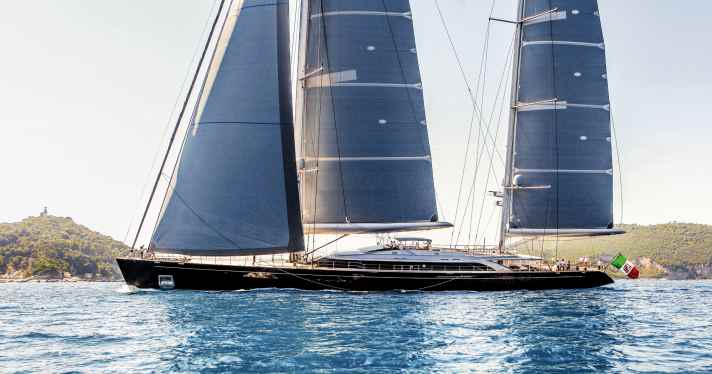Ranking: The 10 largest sail areas
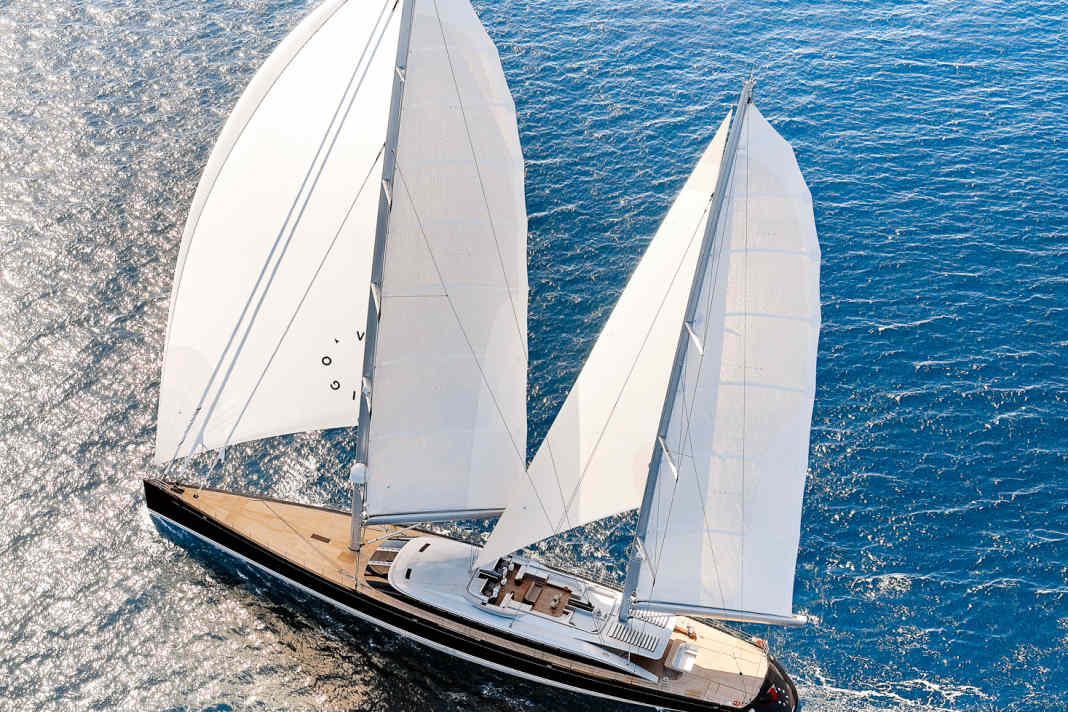





1st Vertigo: 5,330 square metres
At 67 metres in length, the 2011 alloy construction is one of the smaller large formats under sail - but by far the most over-rigged. The sail wardrobe consisting of mizzen main, mizzen staysail, main and asymmetrical spinnaker is kept in check by 16 capstan winches. The New Zealand shipyard, which no longer exists, realised the flat Philippe Briand lines in aluminium. "Vertigo's" boatswain should be free from giddiness when he carries out the rig check on the 68 metre long main mast. The counterpart to the ketch rigging is a lift keel that goes down to nine metres. The charter costs for "Vertigo" are 245,000 euros, including a customised limit tender, two dinghies and the option of 20-knot sailing fun.

2nd M5: 4,538 square metres
Christened "Mirabella V" in 2004, a two-year refit in 2014 turned the world's largest slip-rigged yacht into the "M5". Pendennis increased the overall length to 78 metres by adding a stern extension, while Carbo-Link overhauled the 89-metre carbon fibre mast and rig. The upgrade to titanium fittings and carbon shrouds and forestays resulted in a weight saving of 18 tonnes. The 9.40 metre long and 900 kilogram(!) boom vang remained unchanged. Doyle sewed new sails, including a new mainsail, which at 1,557 square metres is still the largest in the world and consists of several sections.
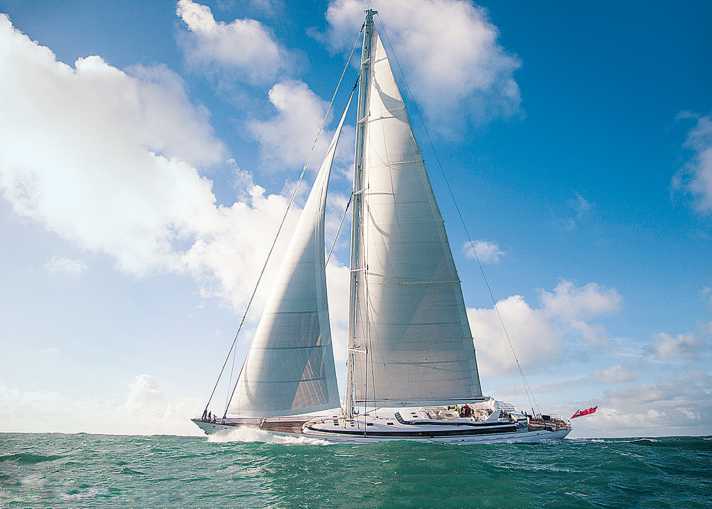
3rd SY A: 4,440 square metres
Mockers may claim that "Sailing Yacht A" only occasionally adorns herself with her Doyle sailing dress. BOOTE EXCLUSIV was recently able to observe the 143 Nobiskrug metres without any engine assistance. All three sails, each measuring a good 1,500 square metres, were fished out of the trees. It took just under an hour for the total of 6,800 kilograms on the free-standing and rotating masts to stand in the wind. After that, 38 tonnes weighed on the sheets. During the construction phase, the three almost 100 metre long carbon masts had to be transported on barges at two points and stored on rollers. Rigidly lashed to the deck, the carbon fibre sabres would have caused the steel to bend.
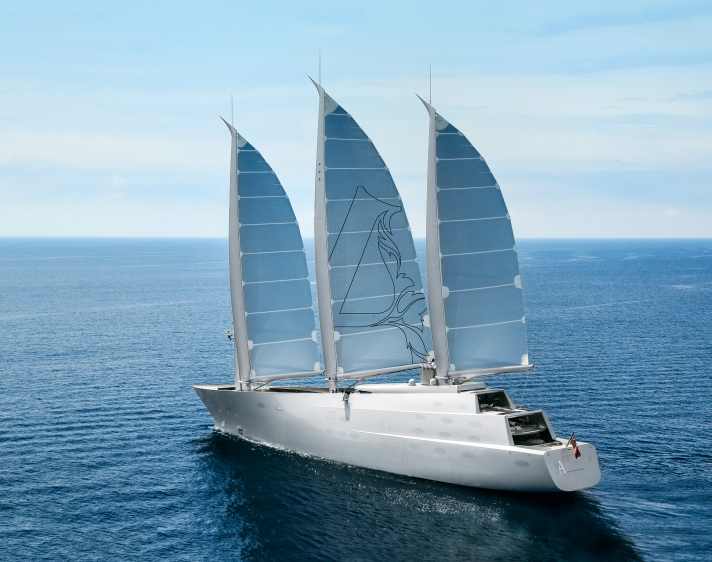
4th Aquijo: 4,400 square metres
Theoretically, the crew of the world's largest ketch at 86 metres in length could even hoist 5,872 square metres of sail (main, mizzen, genoa, staysail, code 1) on the carbon masts, each 90 metres high. But even with standard sails, the masts press 350 tonnes each on the foundation plates and 40 tonnes on the sheets. In aft winds, full sail for the Bill Tripp construction realistically means that the main, mizzen, staysail and Code 1 are in the wind. "Aquijo" is a joint venture between Vitters and Oceanco, commissioned by a German owner and offered on the charter market for 450,000 US dollars/week (Caribbean) and 400,000 euros/week (Mediterranean).
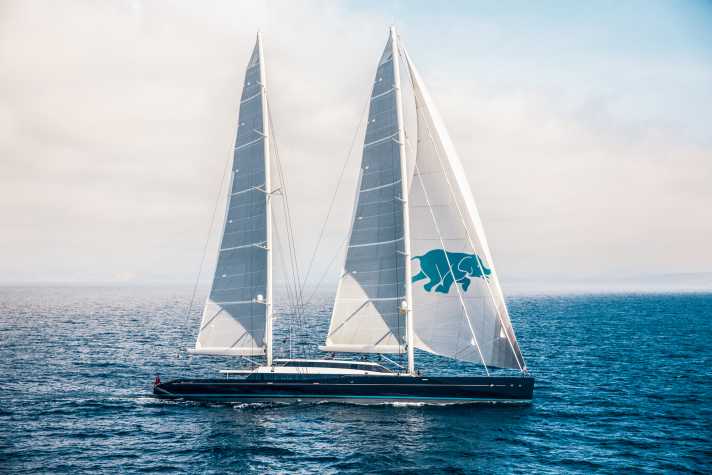
5th Perseus³: 4,131 square metres
With the 2,600 square metre A2 spinnaker, the 60-metre sloop is powered by the world's largest sail on the beam. The 35-strong race crew only hoists the 480-kilogram cloth when the wind is blowing at less than 25 knots and the course is not too flat downwind. In gybes, the Harken winches take up to 120 metres of sheet, and the sail halyards are monitored by video cameras. The 75-metre mast has a record-breaking 12.30 metre lifting keel. The owner of "Perseus³" not only likes to sail fast, the carbon tender can reach 72 knots thanks to the helicopter turbine.
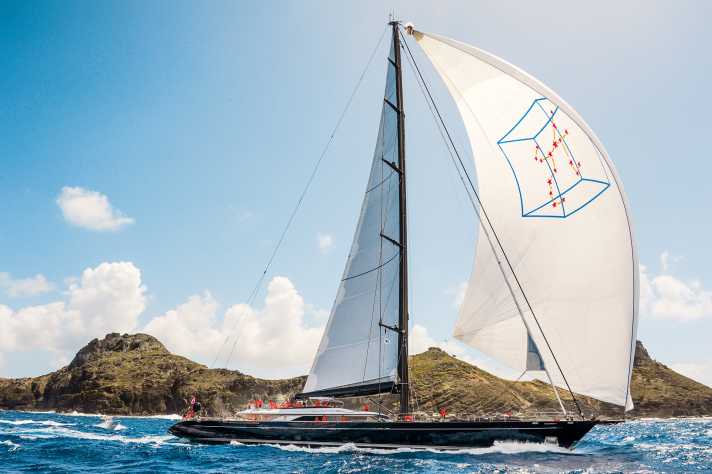
6th Hetairos: 4,000 square metres
The 67-metre ketch has the most modern underwater hull in the ranking and is sailed in regattas with up to 43 men. In winter 2011, a few months after the launch at Baltic Yachts in Finland, the Reichel/Pugh design reached 25.7 knots during an eight-day Atlantic crossing in the surf. The hull speed of the 230-tonne all-carbon construction: 18.2 knots. 4,000 square metres of sail laminate correspond to twice the sail area of the "Gorch Fock". "Hetairos" owner Otto Happel enjoys taking part in superyacht regattas.
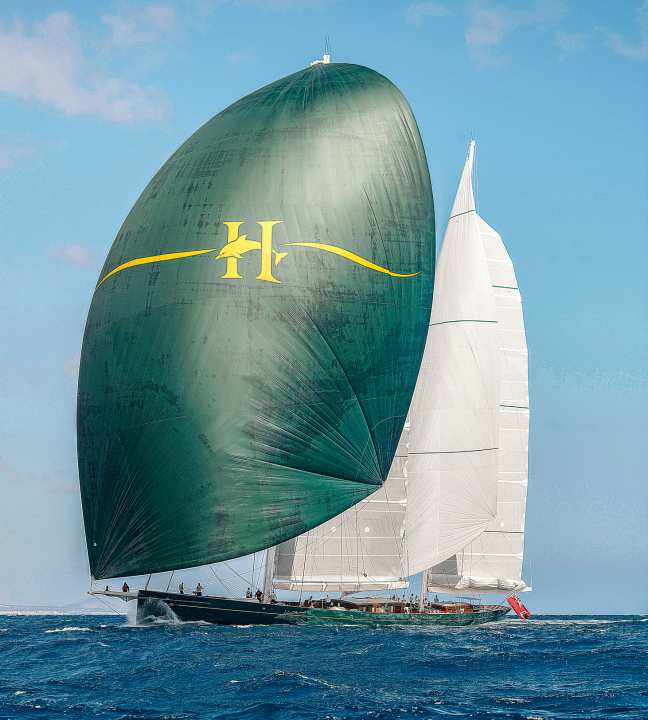
7th Eos: 3,600 square metres
The supposedly only classic on this list is a new aluminium construction from 2006, and one of the very few sailing large formats from the Lürssen halls. At the touch of a button, the three Rondal masts unfurl the classic triangular Schrat sails. Two of the three hydraulically furling staysails extend from the 61 metre long mast to the bowsprit. The almost 93 metre long three-masted schooner is owned by US entrepreneur Barry Diller and his wife, fashion designer Diane von Furstenberg. "Eos" is currently undergoing a second extensive refit at Royal Huisman.
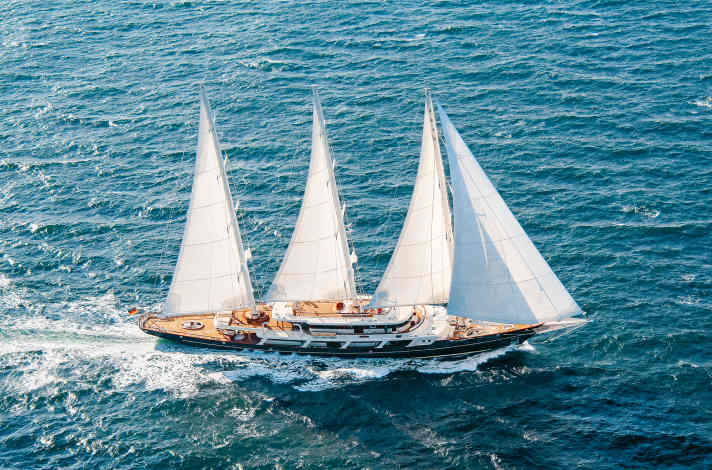
8. Kokomo 3: 3,110 square metres
Alloy Yachts launched the 58 metre long flybridge slip with lines by Ed Dubois in 2010. 883 square metres of the mainsail and 2,227 square metres of the asymmetric gennaker are included in the mainsheet sail plan. The latter played a large part in Doyle Sails building a new loft in Auckland. In Kalmen, a crow's nest that travels 30 metres up the 72.40 metre carbon mast makes it easier to search for wind fields. Australian property mogul Lang Walker occasionally anchors his "Kokomo 3" in front of the resort of the same name on his private island off Fiji. The crew then raises the keel from 8.10 to 4.90 metres.
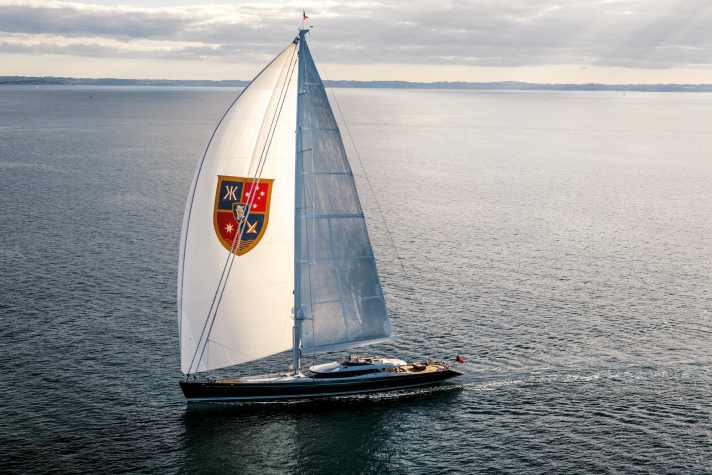
9th Ngoni: 3,093 square metres
Her mast rises 75 metres above the surface of the water, the long stern and the aero bow are separated by 58 metres of aluminium. The Royal-Huisman-Slup has a furling 3Di mainsail from North Sails with a wide leech and 853 square metres of sail area. The crew sets a 2,240 square metre gennaker in front of the forestay, behind which there would theoretically still be room for a 289 square metre staysail. Unfortunately, "Ngoni" has not yet made an appearance under full sail in her debut season. However, Ed Dubois' last crack should have already exceeded the hull speed of 17.5 knots.
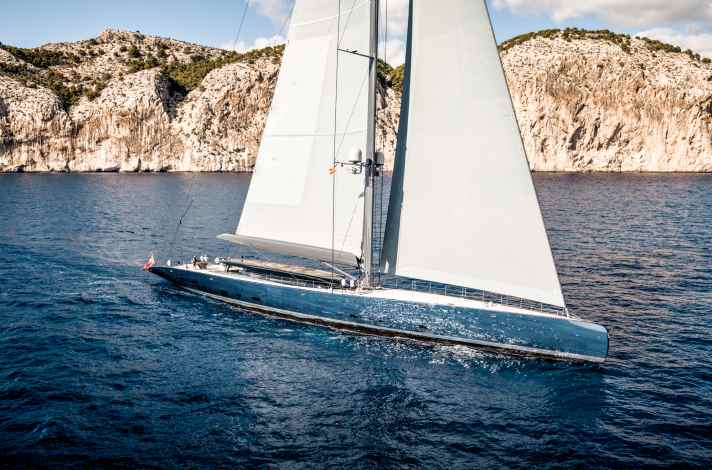
10th Sybaris: 3,045 square metres
Perini Navi completed the 70-metre Aluketsch, ranked tenth in our ranking of the largest sailing yachts, in 2016. Since then, the "Sybaris" owner has taken part in regattas in the Mediterranean and the Caribbean. On aft courses, 3,045 square metres of 3DL sail laminate from North Sails extend from the 62 and 72 metre high carbon masts. Sensors measure the loads in the rig, captive winches work with loads of up to 35 tonnes and line speeds of 75 metres per minute. Tacking takes 20 seconds.
